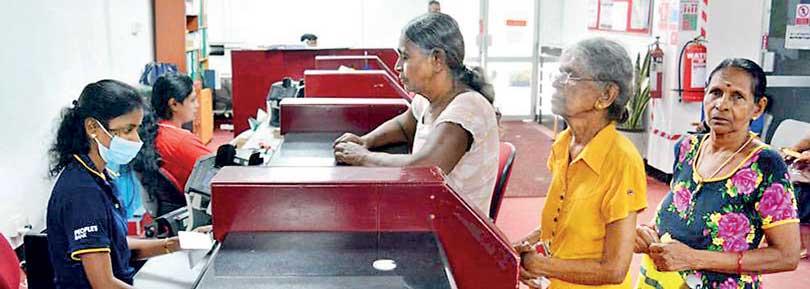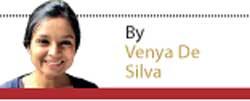28 Mar 2024 - {{hitsCtrl.values.hits}}

In contrast to the eligibility criteria used by Samurdhi, the Aswesuma criteria reflect greater sensitivity to the multiple interlinked deprivations that constitute and contribute to poverty
Photo by Pradeep Pathirana
 Aswesuma is the most recent welfare benefits programme introduced by the government of Sri Lanka. It replaces the Samurdhi scheme and is the result of a necessary condition to be fulfilled by the government of Sri Lanka in the loan agreement with the International Monetary Fund (IMF). Aswesuma provides targeted assistance to vulnerable groups by reducing poverty; its goal is to enhance social welfare
Aswesuma is the most recent welfare benefits programme introduced by the government of Sri Lanka. It replaces the Samurdhi scheme and is the result of a necessary condition to be fulfilled by the government of Sri Lanka in the loan agreement with the International Monetary Fund (IMF). Aswesuma provides targeted assistance to vulnerable groups by reducing poverty; its goal is to enhance social welfare
and support household
resilience at a time of
economic instability.
The recent months have given us a glimpse into Aswesuma in action, and brought to the forefront questions about whether those who are most in need of welfare benefits are receiving assistance, and how eligibility is determined. Simplifying the approach that is currently used to assess Aswesuma eligibility is key to addressing these questions; with both efficacy and efficiency at stake, the timely adoption of an alternative to the current resource-intensive methodology is crucial.
Missing the mark with eligibility
Eligibility for Aswesuma is assessed using a Multidimensional Poverty Index (MPI). In contrast to the eligibility criteria used by its predecessor Samurdhi, the Aswesuma criteria reflect greater sensitivity to the multiple interlinked deprivations that constitute and contribute to poverty. Aswesuma assesses deprivations across six dimensions: education, health, economic level assets, housing condition, and family demography. A prospective beneficiary is assessed based on their self-reported responses to questions relating to 22 indicators, which are distributed across the six dimensions.
While MPIs are good at measuring poverty, they are typically less suitable for targeting welfare assistance. This is because, when the applicant’s responses are tied to direct cash benefits, the indicators that are used must also carry certain other special attributes. We must ask, for example, how easy is it to verify the response to a given indicator? And what is the possibility of misrepresenting or falsifying this information (which depends both on how easy it is to falsify/misrepresent information, and how likely it is that information will be falsified/misrepresented). Otherwise, the government not only risks missing the most immediate objective of Aswesuma— targeting those who are most in need of welfare assistance— but also opens itself up to a costly data collection exercise, which misdirects funds away from the intended beneficiaries. These are implications which the government simply cannot afford at this time.
Rethinking the indicators
Let us illustrate by looking at two of the 22 indicators that are currently used to determine Aswesuma eligibility: first, the monthly electricity consumption of a household, and second, the average monthly income of the household. In the case of the electricity consumption indicator, the cost of verification of household usage is low, because an electricity bill provides this information. Equally– and perhaps more importantly– the possibility and the probability of misrepresentation or falsification of this information is also low. Therefore, electricity consumption can be classified as a near ideal-type indicator: that is, one that displays high ease of verification, low possibility of falsification and low likelihood of falsification. A detailed analysis of the utility of this indicator has already been explored in Targeting Assistance: Electricity Consumption is a Superior Method, a background note published by Verité Research in 2022.
In contrast to monthly household electricity consumption, monthly household income is precisely the type of indicator that becomes problematic in the context of determining eligibility for welfare benefits. Based on the criteria that is currently used to determine Aswesuma eligibility, a household is identified as poor if its monthly income is less than a pre-determined cut-off point (which is established based on the official poverty line published by DCS). However, given the self-reported nature of this information, the ease of verification is low; additionally, the ease of misrepresentation or falsification, and the likelihood of misrepresentation or falsification, are both high. Therefore, requesting this type of data from a prospective recipient of welfare benefits serves next to no useful purpose, and in fact increases the vulnerabilities that are built into the targeting mechanism.
What about indicators that are more costly to verify— for example, where verification requires a visit by a government representative to a household? A majority of the current indicators within the housing condition dimension, for example, require this type of verification. Assuming the government is willing and able to bear the cost of verification, when combined with both low ease of falsification, and low likelihood of falsification, these indicators also emerge as strong indicators in the context of determining eligibility for welfare benefits.
Using this approach, the list of 22 indicators that is currently used to determine Aswesuma eligibility can be refined down to 10 indicators. While remaining true to its roots— specifically, the commitment to recognise poverty and deprivation in its multiple forms— this streamlined list of indicators represents a less resource intensive and more reliable approach for determining Aswesuma eligibility.
Indicators: More is not better
Indicators play a crucial role in enabling social protection programmes such as Aswesuma to do their job. Getting the indicators right is an imperative, as is revising and refining them in order to improve their efficacy. This article offers a very preliminary indication of what such an approach might look like. Rather than deploying all indicators of an MPI, a streamlined list comprising half the number of indicators would not only do the job of determining eligibility, but also do it better, by providing a more efficient framework for targeting beneficiaries.
(Dr. Venya De Silva is a social anthropologist and a Research Director at Verité Research. Research support for this article was provided by Isurika Perera, who is a junior research analyst at Verité Research)
25 Nov 2024 26 minute ago
25 Nov 2024 31 minute ago
25 Nov 2024 35 minute ago
25 Nov 2024 2 hours ago
24 Nov 2024 24 Nov 2024